![]() Last update:
Last update:
The new program is called AURORE2
The SINUS approximation is the formula for angles from 0..45 degrees:
100*sin(x) = -0.352173719 + 1.845955302*x - 0.005761952*x*x
This formula has to be adjusted to the integer problem:
100*sin(x) = { [ { [ (x*71 + 5 ) div 10 ] * 26 - [ ( x*x div 5 )*57 ] div 20 -35 } div 10 ] + 5 } div 10
between 46..90 degrees: the result is given by: sqrt(10000-100*sin(90-x))
Here the LeRobot subroutine:
| beginofsub(sinus) if(var,angle,GT,con,45) setvar(flag,con,2) mulvar(angle,con,-1) sumvar(angle,con,90) else() setvar(flag,con,1) endif() setvar(result,var,angle) mulvar(result,con,71) sumvar(result,con,5) divvar(result,con,10) mulvar(result,con,26) subvar(result,con,-35) setvar(h1,var,angle) mulvar(h1,var,angle) divvar(h1,con,5) mulvar(h1,con,57) divvar(h1,con,20) subvar(result,var,h1) divvar(result,con,10) sumvar(result,con,5) divvar(result,con,10) if(var,flag,eq, con,2) {case angle greater than 45 deg} mulvar(result,var,result) setvar(arg,con,10000) subvar(arg,var,result) setvar(result,con,100) {first approx} loop(con,4) {Heron's alg. for square-root} setvar(h1,var,arg) divvar(h1,var,result) sumvar(h1,var,result) divvar(h1,con,2) setvar(result,var,h1) endloop() endif() endofsub() |
This is our second attempt to realize an RCX-robot able to navigate freely to a given point T(a,d), where a represents the phase of the vector OT and d its magnitude. The phase is exprimated as a clockwise compass-angle.
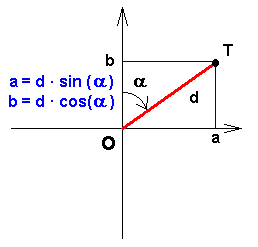
The robot should read the compass-direction using the PEWATRON compass-sensor, then read the travelled distance during a certain time, compute the actual position, adjust the course and finally, decide the motor-control accordingly. All this is done similary to the algorithm explained at the honey-bee and robot navigation page.
The following robot design (an altered Mars-Rover) shows an important detail: the differential gearing is used as an adder. So, if the robot is turning, the rotation-sensor will not register any change. This simplifies the program-design, because the robot may continuously check the actual position without error. Otherwise the rotation-sensor will notify advancing, whereas the robot only executes zero-turning.
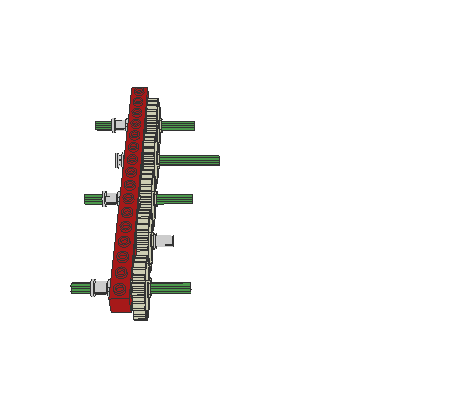 |
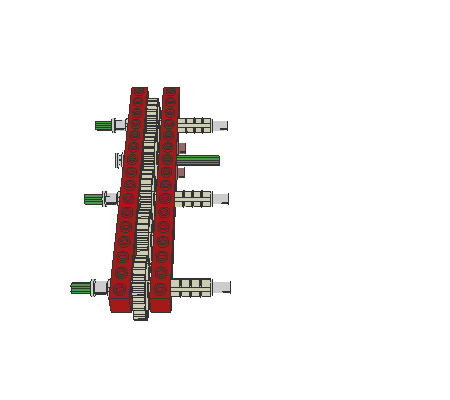 |
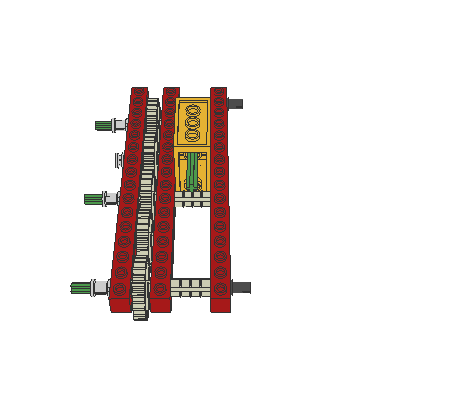 |
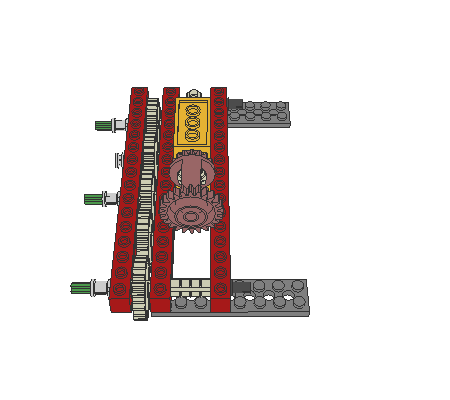 |
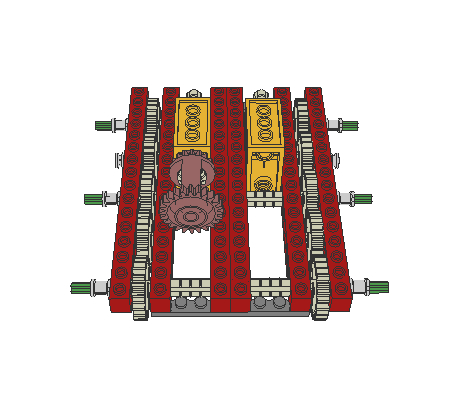 |
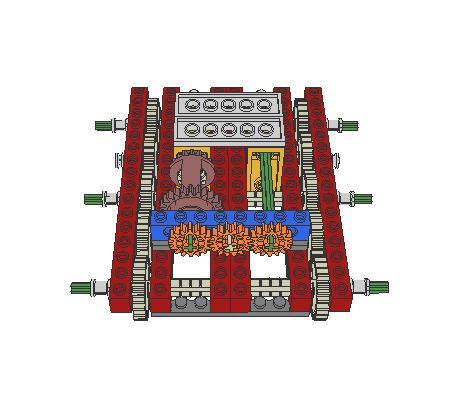 |
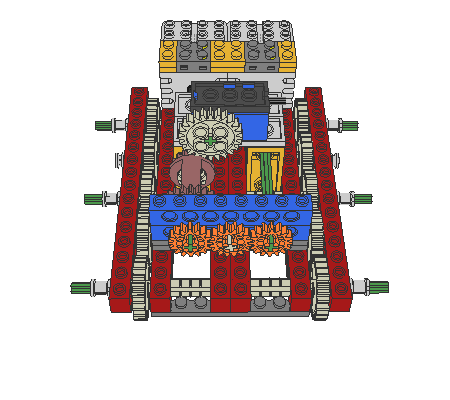 |
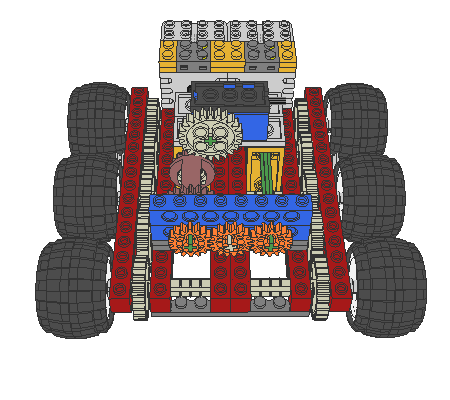 |
Download the LEOCAD
and the LeRobot files![]() . You'll need the new LeRobot
version!!
. You'll need the new LeRobot
version!!
Do not forget first to run the CALIBRATION program, then the NAVIGATOR.
The target point T may be entered by sending directly to the RCX: the phase a to variable 28 and the magnitude d to variable 29.
As you may see, the robot tries to surround obstacles and nevertheless arrives at the given target.
ATTENTION: this robot is rather slow but it has a big resolution. The precision is remarkable ~ 4 cm.